Dr. Muhammad Hamidullah’s Work on Early Ḥadīth Conservation, Sahīfa of Hammām: a Rebuttal to Orientalist Narratives
The transmission of ḥadīth—whether from region to region within the Arabian Peninsula, from Arabs to non-Arabs (‘Ajamīs), or across continents—along with its meticulous isnād (chain of narration) and detailed examination of the transmitters’ integrity, reliability, and credibility, forms a compelling narrative of authenticity and scholarly rigour in Islamic tradition.
Dr. Muhammad Hamidullah, in his groundbreaking work Sahīfa Hammām ibn Munabbih[1], defines ḥadīth as a body of literature that “covers not only the sayings of the Holy Prophet ﷺ but also his actions as well as what he tolerated among his companions.”[2] This comprehensive definition underpins the Prophetic tradition’s vast scope and historical significance.
Before the Prophetic era (al-‘Aṣr al-Jāhilīyya)[3], authenticity was deeply rooted in the very fabric of Arab society. As a matter of historical record, even the lineage of Arabian horses was preserved with utmost precision[4]. This cultural emphasis on preserving truth and origin naturally extended to ḥadīth transmission—be it oral or written—forming the bedrock of Islamic scholarly traditions[5].
Despite this, some scholars, particularly extreme Orientalists, have questioned the early compilation and preservation of the ḥadīth corpus. It is precisely this challenge that Dr. Hamidullah addressed with scholarly finesse. His academic efforts focused on the history of ḥadīth conservation—an area long subjected to scepticism and misrepresentation.
Upon reviewing the book, it becomes evident that Dr. Muhammad Hamidullah was partly influenced by the intellectual environment shaped by Orientalist modernism. In many ways, their critiques motivated him to produce this monumental work. His extensive travels across various countries, where he accessed renowned libraries and studied rare manuscripts, exposed him to a range of unresolved and often baseless objections raised by both Eastern and Western Orientalists regarding ḥadīth preservation.
Although responding to such critiques had already been encouraged by his mentor, the late Mawlānā Manāẓir Aḥsan Gīlānī (d. 1956), Dr. Hamidullah took it upon himself to address them thoroughly and assertively through Sahīfa of Hammām. His choice to centre the work on this particular ṣaḥīfa was deliberate: Sahīfa Hammām ibn Munabbih stands as one of the earliest and most credible written records of Prophetic sayings, transmitted directly from the companion Abū Hurayrah (RA) to his student Ḥammām.
What makes Sahīfa of Hammām an essential read for any serious student of Islamic history and ḥadīth sciences is its clarity of argument, rigorous methodology, and evidence-based refutations. Dr. Muhammad Hamidullah structured the book using a twofold approach, each part serving a distinct yet complementary objective in response to Orientalist critiques[6].
- Analytical Refutation of Orientalist Doubts
In the first section (pages 1–41), Dr. Hamidullah addresses the prevailing claim that the theory of oral transmission was artificially imposed by early Muslim scholars to legitimise ḥadīth literature. He systematically gathers key objections raised by Orientalists and responds to them with robust historical and textual evidence. Far from being accidental or fabricated, he demonstrates that oral preservation was a culturally grounded and scholarly discipline, reinforced by early written documentation. His arguments underscore that written and oral methods coexisted in the earliest phases of Islam[7]. - Presentation of the Sahīfa as Historical Evidence
The second section of the book presents the full text of Sahīfa Hammām ibn Munabbih, one of the earliest known compilations of ḥadīth. Hammām, a direct student of Abū Hurayrah (RA), recorded around 138 narrations, many of which appear in Ṣaḥīḥ al-Bukhārī and Ṣaḥīḥ Muslim. Through a comparative analysis of content and structure, Dr. Hamidullah reinforces the view that written ḥadīth preservation was active during the time of the Companions, thus invalidating the claim that Islamic tradition relied solely on unreliable oral transmission for centuries.
Though the title An Introduction to the Conservation of Hadith in the Light of the Sahīfa of Hammām was later formalised by his students and colleagues as a tribute, the essence of the work remains deeply rooted in Dr. Hamidullah’s scholarly dedication. With precision and historical insight, he defends the integrity of early ḥadīth transmission, offering one of the most compelling counter-narratives to Orientalist scepticism to date.
For those interested in ḥadīth studies and Islamic historiography, Dr. Hamidullah’s Sahīfa Hammām is not merely a rebuttal to Orientalist critiques—it is a masterclass in historical method, scholarly integrity, and intellectual courage. The rationale behind his use of Sahīfa Hammām as the cornerstone of his argument is what makes this work so compelling and meaningful—especially for those like me whose research intersects with the science of ḥadīth authenticity.
Who Was Dr. Muhammad Hamidullah?
Dr. Muhammad Hamidullah (1908–2002) was a distinguished Islamic scholar, jurist, historian, and linguist, renowned for his pioneering contributions to ḥadīth preservation, Islamic legal theory, and historical research. Born in Hyderabad, India, he pursued advanced studies in Islamic law and history, earning doctorates from both Osmania University and the University of Bonn in Germany.
A polyglot fluent in Arabic, Persian, Urdu, French, German, and English, Dr. Hamidullah was uniquely equipped to engage with a broad spectrum of historical and primary sources across cultures. One of his most groundbreaking achievements was the critical edition of Sahīfa Hammām ibn Munabbih, published in 1955. This early ḥadīth compilation, attributed to a direct student of Abū Hurayrah (RA), offered irrefutable proof that ḥadīth documentation began during the Prophet’s ﷺ lifetime—thereby challenging the Orientalist assertion that ḥadīth remained purely oral for centuries.
Beyond ḥadīth studies, he contributed significantly to Islamic jurisprudence, political thought, and Qur’anic studies. His notable works include The Muslim Conduct of State (1941) and Introduction to Islam (1957), both of which remain widely cited in academic and educational settings. Over his lifetime, he authored more than 250 books and scholarly articles.
Despite his scholarly stature, Dr. Hamidullah chose a life of simplicity, spending most of his academic career in France in quiet dedication to research. He shunned personal fame, letting his rigorous scholarship speak for itself. Today, his legacy continues to shape contemporary studies in ḥadīth and Islamic history, guiding students, researchers, and scholars across the world[8].
Arguments That Provoked Dr. Hamidullah to Write the Work
In a society like that of the Arabian Peninsula—where authenticity was so deeply embedded that even the lineage and breeds of horses were meticulously preserved—questioning the credibility of ḥadīth transmission seems paradoxical. This was a region where ancestral lines were carefully recorded, and truthfulness was a cultural norm. The people of this region, known for their oral precision, preserved and conveyed information with remarkable accuracy long before the advent of widespread literacy.
Yet, what disturbed Dr. Muhammad Hamidullah and prompted him to write Sahīfa of Hammām was the growing trend—especially from the mid-19th century onwards—of misconceptions, misinterpretations, and outright misrepresentations of the so-called “Theory of Oral Transmission” within the scholarly discourse surrounding ḥadīth preservation. These critiques often came from Orientalists, along with several Western and even some Eastern scholars, who began challenging the reliability and authenticity of the ḥadīth literature, its modes of transmission, and the integrity (al-‘adālah) and trustworthiness (al-thiqah) of the transmitters themselves[9].
Dr. Hamidullah was deeply unsettled by such claims. The Orientalists argued that the oral transmission of ḥadīth created opportunities for manipulation—allowing transmitters or scholars to alter either the matn (text) or isnād (chain) to suit their own objectives. This, in their view, rendered ḥadīth literature closer to folklore than to authentic religious documentation—comparable to tales passed down by old women, grandfathers, grandmothers, and casual storytellers in tribal settings.
The central flaw in these arguments, as Dr. Hamidullah meticulously demonstrates, lies in the assumption that oral transmission was adopted primarily due to the supposed illiteracy of the Arabs during the Prophetic period. The critics suggested that the widespread use of oral methods reflected an intellectually primitive society that had no alternative. Furthermore, they pointed to seemingly contradictory narrations attributed to the Prophet ﷺ regarding whether ḥadīth should be written down at all, claiming this as further evidence for the dominance of oral transmission and the confusion it caused[10].
Dr. Hamidullah’s Sahīfa of Hammām directly engages with these assertions. He not only refutes the idea that oral transmission was inherently flawed but also presents compelling evidence of early written documentation of ḥadīth, particularly through the Sahīfa of Ḥammām ibn Munabbih. This early manuscript, he argues, stands as a testament to the existence and reliability of written transmission in the Prophetic era, effectively dismantling the Orientalist narrative and affirming the methodological soundness of ḥadīth preservation in Islam.
Dr. Hamidullah’s Way of Debunking These Arguments and Proving Them Wrong with Robust Evidence
To begin with, it is important to consider two logical foundations that underpin Dr. Hamidullah’s response to the Orientalist critiques of “Oral Transmission” in ḥadīth sciences:
First, he points to the historical reality of al-Jāhiliyyah—the pre-Islamic era—where Arabs, despite being largely illiterate, possessed an extraordinary talent for memorisation. This remarkable memory was not just used for poetry or stories, but for preserving intricate genealogies and even the hereditary records and classifications of khuyūl (horses). These records were critical for assessing a horse’s strength, endurance, and suitability for battle or races. The Arabs knew their horses by name and traced their bloodlines with pride, linking them to powerful sires and ancestors.
A famous narration supports this culture. ʿAbdullāh ibn ʿUmar reports:
"The Prophet ﷺ held a horse race with lean horses from Al-Ḥafya to Thaniyyat al-Wadāʿ, and with horses that had not been trained (i.e., not slimmed) from Thaniyyat al-Wadāʿ to the Masjid of Banī Zurayq. ʿAbdullāh ibn Masʿūd was one of those who rode in this race."
(Narrated by Mālik, al-Bukhārī, Muslim, Abū Dāwūd, al-Nasāʾī, and al-Tirmiḏī)[11]
This deeply rooted cultural habit of memorisation in al-Jāhiliyyah serves as a direct rebuttal to the Orientalists’ assumption that oral transmission lacks credibility. If pre-Islamic Arabs could reliably preserve detailed horse genealogies and complex family trees purely through memory, then preserving ḥadīth—which carried immense spiritual, legal, and moral significance—would have been even more diligently observed. In this context, doubting the authenticity of ḥadīth solely because it was transmitted orally is, as Dr. Hamidullah implies, a claim bordering on absurdity.
Secondly, the reviewer highlights another powerful dimension in Dr. Hamidullah’s logical rebuttal: the intense interest, quest, and yearning for knowledge among the Ṣaḥābah (RA). If the pre-Islamic Arabs could go to great lengths to memorise and preserve the lineage of their horses—an aspect tied to leisure, pride, and status—then how much more dedication would they have shown in preserving the words and actions of the Prophet Muhammad ﷺ, whom they loved more than their own lives?
Dr. Hamidullah argues that when the object of preservation shifts from horses to the message of the Prophet ﷺ—guidance for salvation—the authenticity and accuracy of transmission increase exponentially. The companions did not merely transmit his sayings casually; they held them sacred. Their himmah (resolve) and commitment to preserving ḥadīth surpassed even their enthusiasm for poetry, ancestry, and other cultural pillars of the time.
A compelling example is the group known as Ahl al-Ṣuffah[12]—a devout band of companions who lived on the shaded platform of Masjid al-Nabawī. These men were dedicated entirely to learning and transmitting the sayings of the Prophet ﷺ. Many of them endured hunger for days, their only aim being to memorise and pass on the words of the Messenger ﷺ. Despite their poverty, they became the pillars of oral preservation, embodying both the discipline of the Arab memory and the spiritual motivation unique to Islam.
Now imagine—if these men, who were already Arabs and inheritors of an oral tradition[13] skilled in preserving the lineage of animals, directed those same cognitive capacities toward the ḥadīth, how reliable would the transmission be?
Foundational Discoveries in Sahīfa of Hammām and Dr. Hamidullah’s Scholarly Counter to Orientalists
In Sahīfa Hammām, Dr. Muhammad Hamidullah uncovers several authentic early collections of aḥādīth al-Nabawī, preserved in the archives and libraries of France, Germany, and Turkey. His scholarly contributions to the preservation and authentication of early ḥadīth literature stand as a formidable challenge to the longstanding critiques posed by Orientalists.
One of the central pillars of his work is the meticulous study of Sahīfa Hammām ibn Munabbih—widely recognised as one of the earliest recorded compilations of ḥadīth. Through this groundbreaking research, Dr. Hamidullah convincingly demonstrates that the documentation of ḥadīth did not emerge centuries later, as Orientalists often claim, but was in fact contemporaneous with the era of the Prophet ﷺ and his companions.
To dismantle the myth that early ḥadīth transmission lacked written records, Dr. Hamidullah presents numerous examples of early documentation. Three key instances include:
- Sahīfa Hammām ibn Munabbih
This compilation was written by Ḥammām ibn Munabbih, a direct student of Abū Hurayrah (RA), in the first century of Islam. It contains approximately 138 aḥādīth, many of which appear in later canonical collections such as Ṣaḥīḥ al-Bukhārī and Ṣaḥīḥ Muslim. Its textual consistency with these later works serves as compelling evidence that ḥadīth documentation began during the time of the companions, not generations later[14]. - The Writings of ʿAbdullāh ibn ʿAmr ibn al-ʿĀṣ (RA)
A close companion of the Prophet ﷺ, ʿAbdullāh ibn ʿAmr was given express permission to record the Prophet’s sayings. His compilation, known as As-Ṣaḥīfah al-Ṣādiqah, is a significant early text containing numerous authentic narrations. It was preserved and transmitted through successive generations, thereby affirming the practice of written ḥadīth documentation during the Prophet’s lifetime[15]. - The Official Letters and Covenants of the Prophet ﷺ
Prophet Muhammad ﷺ actively used written correspondence as a means of communication and record. With the help of scribes like Zayd ibn Thābit (RA), he dictated letters, treaties, and official instructions—many of which were addressed to tribal leaders and foreign rulers such as Heraclius, Chosroes, and the Negus of Abyssinia. These documents not only carried legal and political significance but also stand as textual proof of the Prophet’s endorsement of written preservation.
Through these well-substantiated examples, Dr. Hamidullah critically aligns Sahīfa Hammām with broader textual evidence to assert that ḥadīth preservation was never exclusively oral. His approach—marked by rigorous academic scrutiny and deep historical insight—effectively debunks the Orientalist narrative that paints early Islamic transmission as unreliable or folkloric.
Dr. Hamidullah’s scholarship reinforces the credibility and reliability of the ḥadīth tradition. By establishing Sahīfa of Hammām as a foundational manuscript in Islamic historiography, he provides a decisive and well-argued refutation to sceptics. His work not only restores confidence in the early Muslim community’s efforts to safeguard prophetic teachings but also reaffirms the intellectual integrity and methodological precision of classical Islamic scholarship[16].
The Contradictory Ḥadīths on Conservation and Dr. Hamidullah’s Response
The compilation and conservation of ḥadīth have long been the subject of scholarly discussion, particularly with regard to the seemingly contradictory narrations attributed to Prophet Muhammad ﷺ on whether or not his sayings should be recorded. While some reports appear to prohibit writing down anything other than the Qur'an, others explicitly encourage the documentation of ḥadīth.
One of the most frequently cited narrations against writing ḥadīth is:
"Do not write from me anything except the Qur'an. Whoever has written anything from me other than the Qur'an, let him erase it."
(Ṣaḥīḥ Muslim)[17]
This prohibition, according to scholarly consensus—including Dr. Hamidullah—was contextual. It was issued during the early period of Islam when the Qur'an was still being revealed and compiled. Given the scarcity of writing materials and the risk of mixing Qur'anic revelation with Prophetic sayings, the instruction to refrain from recording anything other than the Qur'an was a precautionary measure, not a permanent ban. It aimed to safeguard the divine text during its formative phase.
However, Dr. Hamidullah points out that other authentic narrations clearly endorse the writing of ḥadīth. For instance, the Prophet ﷺ is reported to have said:
"Write [what you hear from me], for by the One in Whose hand is my soul, nothing comes out of this mouth except the truth."
(Sunan Abū Dāwūd)
A practical example of this permission is seen in the case of ʿAbdullāh ibn ʿAmr ibn al-ʿĀṣ (RA), who explicitly asked the Prophet ﷺ for permission to write what he heard. The Prophet ﷺ granted it, leading to the compilation of As-Ṣaḥīfah al-Ṣādiqah, a written record of many authentic narrations that was preserved and passed down through generations.
Furthermore, Dr. Hamidullah highlights the Prophet’s own use of written communication. Letters to kings such as Heraclius, Chosroes, and the Negus of Abyssinia, treaties with various tribes, and legal documents—all dictated by the Prophet ﷺ—demonstrate that writing was not only accepted but actively employed in the early Islamic state.
From this evidence, Dr. Hamidullah concludes that the early prohibition of ḥadīth writing was temporary and situational, aimed at protecting the Qur'an during its revelation. Selective permission was granted to individuals, particularly those known for their precision and integrity. Oral tradition and written documentation coexisted throughout the Prophet’s ﷺ lifetime and continued thereafter[18].
Conclusion
Dr. Muhammad Hamidullah emphasised that ḥadīth transmission in early Islam followed a dual methodology: oral narration and written documentation. While the Arabs' exceptional memory played a pivotal role in preserving the sayings and actions of the Prophet Muhammad ﷺ, written records were also employed to ensure precision and prevent distortion.
Oral transmission was deeply rooted in the Arab culture of memorisation, allowing the Prophet’s teachings to spread rapidly across the region. However, Dr. Hamidullah acknowledges that reliance on memory alone could lead to discrepancies over time, necessitating a complementary written system.
His scholarship highlights how this integrated approach was instrumental in safeguarding the Prophet’s ﷺ teachings and ensuring their accurate transmission to future generations[19].
Renowned contemporary ḥadīth scholar Jonathan A.C. Brown affirms this in his work Hadith: Muhammad's Legacy in the Medieval and Modern World that written ḥadīth documentation was present from the earliest Islamic period, even during the predominance of oral transmission. He identifies the Ṣaḥīfa of Ḥammām ibn Munabbih—a student of Abū Hurayrah (RA)—as a key example, supporting the view that written and oral methods coexisted from the first century Hijri[20].
About the Author:
Nairul SK is a PG research scholar at Darul Huda Islamic University, (Dept. of Islamic Economics and Finance), Kerala, India, and B.A Political Science Hons Student at IGNOU.
Bibliography
Muhammad Hamidullah, An Introduction to the Conservation of Hadith in the Light of the Sahifah of Hammam Bin Munabbih, new ed. (Kuala Lumpur: Islamic Book Trust, 2023).
Webb, Peter. "Al-Jāhiliyya: Uncertain Times of Uncertain Meanings" Der Islam 91, no. 1 (2014): 69-94. https://doi.org/10.1515/islam-2014-0005
Green, Arnold h. “Family History in The Arab World: Archival History as A Complement to Ethnography.” International Journal of Sociology of the Family 11, no. 2 (1981): 327–46. http://www.jstor.org/stable/23027918.
Jonathan A. C. Brown, Hadith: Muhammad's Legacy in the Medieval and Modern World, 2nd ed. (Bloomsbury: Oneworld Academic, 2019), 19–26.
Adil Salahi, "The Prophet as a Man - 110: Riding a Mule in Battle," Arab News, January 19, 2007, https://www.arabnews.com/node/293426.
Adam Hani Walker, Ashab us-Suffah - The Great Lovers of the Holy Prophet (s.a.w), Understanding Islam, accessed January 30, 2025, https://free-islamic-course.org/articles-on-topical-issues/ashab-us-suffah-great-lovers-holy-prophet-s-w.html.
References:
[1] Muhammad Hamidullah, An Introduction to the Conservation of Hadith in the Light of the Sahifah of Hammam Bin Munabbih, new ed. (Kuala Lumpur: Islamic Book Trust, 2023), 5–47.
[2] Muhammad Hamidullah, An Introduction to the Conservation of Hadith: In the Light of the Sahifa of Hammam Bin Munabbih (Kuala Lumpur: Islamic Book Trust, 2003), 19-21.
[3] Webb, Peter. "Al-Jāhiliyya: Uncertain Times of Uncertain Meanings" Der Islam 91, no. 1 (2014): 69-94. https://doi.org/10.1515/islam-2014-0005
[4] GREEN, ARNOLD H. “FAMILY HISTORY IN THE ARAB WORLD: ARCHIVAL HISTORY AS A COMPLEMENT TO ETHNOGRAPHY.” International Journal of Sociology of the Family 11, no. 2 (1981): 327–46. http://www.jstor.org/stable/23027918.
[5] Muhammad Hamidullah, An Introduction to the Conservation of Hadith in the Light of the Sahifah of Hammam Bin Munabbih, new ed. (Kuala Lumpur: Islamic Book Trust, 2023), 5–47.
[6] Muhammad Hamidullah, An Introduction to the Conservation of Hadith in the Light of the Sahifah of Hammam Bin Munabbih, new ed. (Kuala Lumpur: Islamic Book Trust, 2023), 5–47.
[7] Muhammad Hamidullah, An Introduction to the Conservation of Hadith in the Light of the Sahifah of Hammam Bin Munabbih, new ed. (Kuala Lumpur: Islamic Book Trust, 2023), 5–47.
[8] Muhammad Hamidullah, An Introduction to the Conservation of Hadith in the Light of the Sahifah of Hammam Bin Munabbih, new ed. (Kuala Lumpur: Islamic Book Trust, 2023), 5–47.
[9] Muhammad Hamidullah, An Introduction to the Conservation of Hadith in the Light of the Sahifah of Hammam Bin Munabbih, new ed. (Kuala Lumpur: Islamic Book Trust, 2023), 5–47.
[10] Jonathan A. C. Brown, Hadith: Muhammad's Legacy in the Medieval and Modern World, 2nd ed. (Bloomsbury: Oneworld Academic, 2019), 19–26.
[11] Adil Salahi, "The Prophet as a Man - 110: Riding a Mule in Battle," Arab News, January 19, 2007, https://www.arabnews.com/node/293426.
[12] Ahl al-Suffah, also known as Ashab al-Suffah, were a group of impoverished, unmarried, and homeless companions of Prophet Muhammad who resided in Masjid al-Nabawi. The Prophet permitted them to stay in a designated corner of the Masjid.
[13] Adam Hani Walker, Ashab us-Suffah - The Great Lovers of the Holy Prophet (s.a.w), Understanding Islam, accessed January 30, 2025, https://free-islamic-course.org/articles-on-topical-issues/ashab-us-suffah-great-lovers-holy-prophet-s-w.html.
[14] Muhammad Hamidullah, An Introduction to the Conservation of Hadith in the Light of the Sahifah of Hammam Bin Munabbih, new ed. (Kuala Lumpur: Islamic Book Trust, 2023), 5–47.
[15] Muhammad Hamidullah, An Introduction to the Conservation of Hadith in the Light of the Sahifah of Hammam Bin Munabbih, new ed. (Kuala Lumpur: Islamic Book Trust, 2023), 5–47.
[16] Muhammad Hamidullah, An Introduction to the Conservation of Hadith in the Light of the Sahifah of Hammam Bin Munabbih, new ed. (Kuala Lumpur: Islamic Book Trust, 2023), 5–47.
[17] Jonathan A. C. Brown, Hadith: Muhammad's Legacy in the Medieval and Modern World, 2nd ed. (Bloomsbury: Oneworld Academic, 2019), 19–26.
[18] Jonathan A. C. Brown, Hadith: Muhammad's Legacy in the Medieval and Modern World, 2nd ed. (Bloomsbury: Oneworld Academic, 2019), 19–26.
[19] Muhammad Hamidullah, An Introduction to the Conservation of Hadith in the Light of the Sahifah of Hammam Bin Munabbih, new ed. (Kuala Lumpur: Islamic Book Trust, 2023), 5–47.
[20] Jonathan A. C. Brown, Hadith: Muhammad's Legacy in the Medieval and Modern World, 2nd ed. (Bloomsbury: Oneworld Academic, 2019), 19–26.
Disclaimer
The views expressed in this article are the author’s own and do not necessarily mirror Islamonweb’s editorial stance.

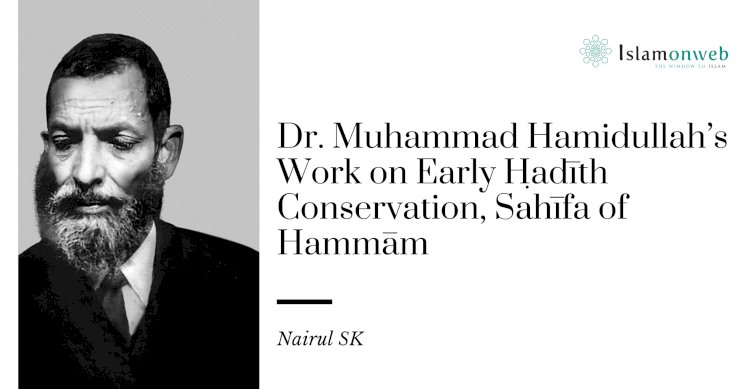



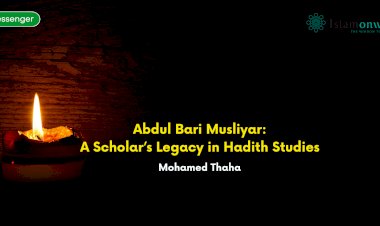

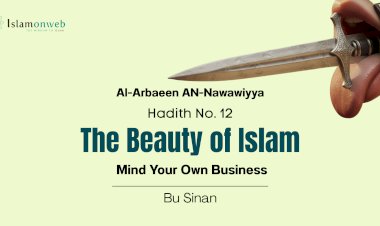
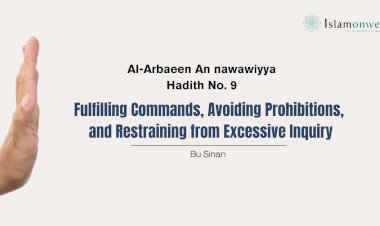
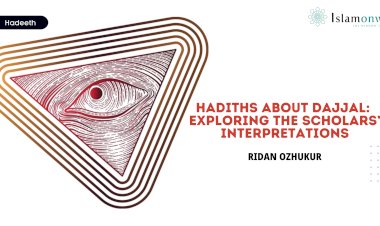











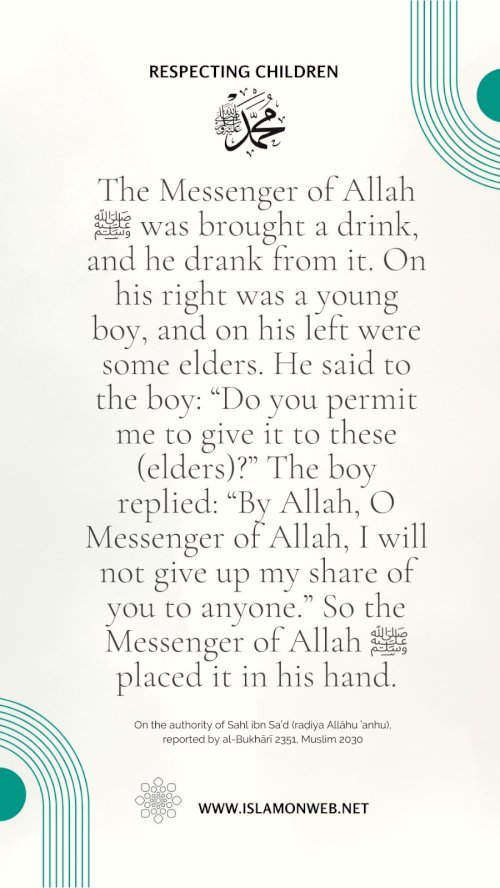
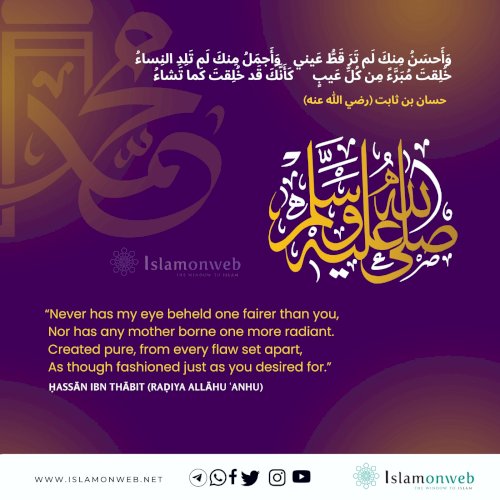
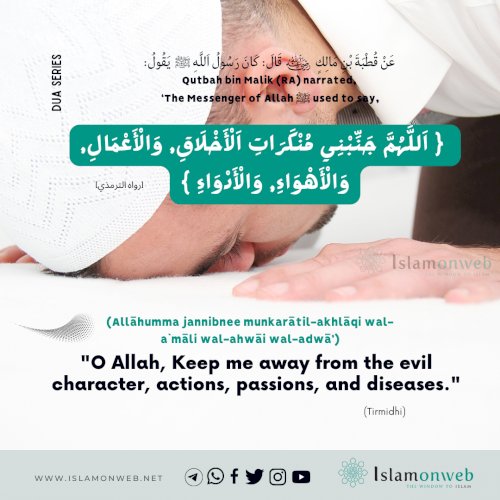
Leave A Comment